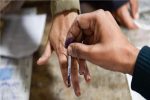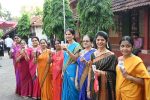
Scientists develop reactor for cost-effective production of hydrogen using sunlight and water
PTI, Oct 3, 2021, 9:20 AM IST

New Delhi: A team of scientists has, for the first time, developed a reactor that produces a substantial amount of hydrogen using sustainable sources like sunlight and water, which is a cost-effective and sustainable process, the Department of Science and Technology (DST) said on Wednesday.
Development of large-scale prototype reactors with photocatalysts (suspended powders) and successful use of those in large-scale hydrogen production is under process, it said in a statement.
The development assumes significance as Prime Minister Narendra Modi, during his Independence Day speech, had announced the launch of a National Hydrogen Mission to accelerate plans to generate carbon-free fuel from renewables as he set a target of 2047 for the country to achieve self-reliance in energy.
India has set a target of 450 GW of renewable energy by 2030. To achieve this, researchers are working towards renewable energy solutions that should be sustainable with a limited carbon footprint.
One of the most economical ways to achieve this is to produce hydrogen at a large scale through photocatalytic water splitting. It is the long-term persistent solution for the growing renewable energy needs and a low-cost economic process that will benefit society in the longer term.
Thus, significant efforts from scientists towards achieving this goal are of utmost necessity and an urgent need of the hour.
In this direction, Dr. Kamalakannan Kailasam and his team, including Professor Ashok K Ganguli, Dr Vivek Bagchi, Dr. Sanyasinaidu Boddu, Dr. Prakash P N and Dr. Menaka Jha from the Institute of Nano Science and Technology (INST), Mohali have developed a prototype reactor that operates under natural sunlight to produce hydrogen at a larger scale (around 6.1 litre in eight hours).
They have used an earth-abundant chemical called carbon nitrides as a catalyst for the purpose.
The process was attempted many times by several researchers using complex metal oxide or nitride or sulfide-based heterogeneous systems, but it was very difficult to reproduce hydrogen in large quantities.
The INST team employed the low-cost organic semiconductor in carbon nitrides, which can be prepared using cheaper precursors like urea and melamine at ease in a kilogram scale.
When the sunlight falls on this semiconductor, electrons and holes are generated.
The electrons reduce the protons to produce hydrogen and the holes are consumed by some chemical agents called sacrificial agents. If the holes are not consumed, they will recombine with the electrons.
This work is supported by the DST Nano Mission NATDP project and the related article has been published in the “Journal of Cleaner Production” recently. The team is in the process of obtaining a patent for the technology.
The INST team has been working in this area of photocatalytic water splitting to generate hydrogen for quite some time now.
“The energy crisis and ever-threatening climate crisis urged us to work on this promising way of hydrogen production through photocatalytic water splitting. The stability and chemical flexibility of having different organic groups in carbon nitrides triggered us to work on these cost-effective organic semiconductor materials for sustainable hydrogen production,” Dr Kamalakannan said.
The INST team started from the lab-scale process to the bulk scale of developing the photocatalyst and hydrogen production through a large prototype reactor.
The team is in the process of optimising the hydrogen production with effective sunlight hours, in addition to the purity of the hydrogen, moisture traps and gas separation membranes so as to hyphenate with the fuel cells.
Hydrogen generated in this manner can be used in many forms like electricity generation through fuel cells in remote tribal areas, hydrogen stoves and powering small gadgets, to mention a few. Eventually, they can power transformers and e-vehicles, which are long-term research goals that are under progress, according to the statement.
Udayavani is now on Telegram. Click here to join our channel and stay updated with the latest news.
Top News
Related Articles More

Don’t blame Dubai’s freak rain on cloud seeding

ISRO Gears Up to Test Critical Parachute Safety of Gaganyaan

Indian students bag NASA awards for Human Exploration Rover Challenge

‘Mastering the Data Paradox’: Book uncovers pivotal role of data in AI age

Bitcoin’s latest ‘halving’ has arrived. Here’s what you need to know
MUST WATCH
Latest Additions

Kumaraswamy accuses political opponents of inducements in Bangalore rural elections

Bengaluru eateries butter up voter turnout with free dosa

Low voter turnout in Karnataka: Only 38.23% cast votes in 14 LS segments during first half of the day

Karnataka Polls: No Modi wave but anti-BJP wave, says CM Siddaramaiah

Cal HC directs NIA to file report on clashes in Murshidabad over Ram Navami celebrations






















